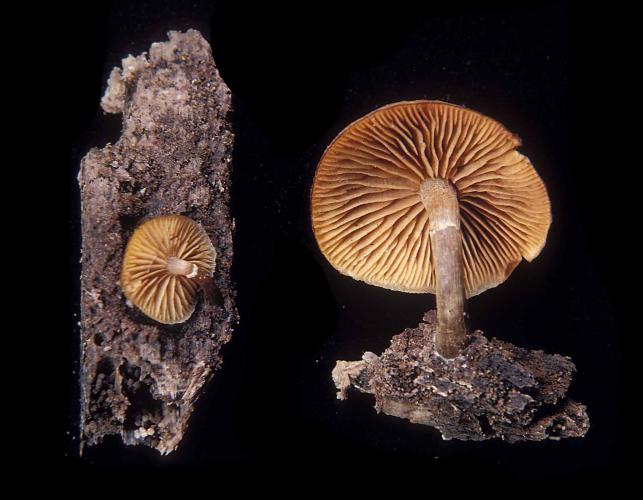
Into this catchall category go the hundreds of small to medium-sized mushrooms that are brown or tan and have the well-defined stalk and cap of a typical mushroom. Spore color, which is used to identify mushrooms, varies in this group. Even experts can have a great deal of trouble sorting “little brown mushrooms” into species. Because many are poisonous, and some deadly, we recommend avoiding the whole bunch.

Habitat and Conservation
Status
Life Cycle
Human Connections
Ecosystem Connections




Mushrooms are a lot like plants, but they lack chlorophyll and have to take nutrients from other materials. Mushrooms are neither plants nor animals. They are in a different kingdom — the fungi. Fungi include the familiar mushroom-forming species, plus the yeasts, molds, smuts, and rusts.
Always be cautious when eating edible mushrooms. Be absolutely sure of the ID, and only eat a small amount the first time you try it to avoid a reaction..





















